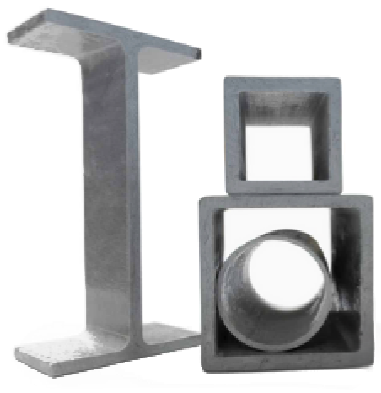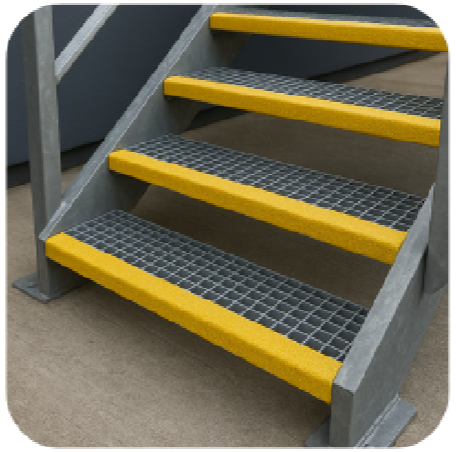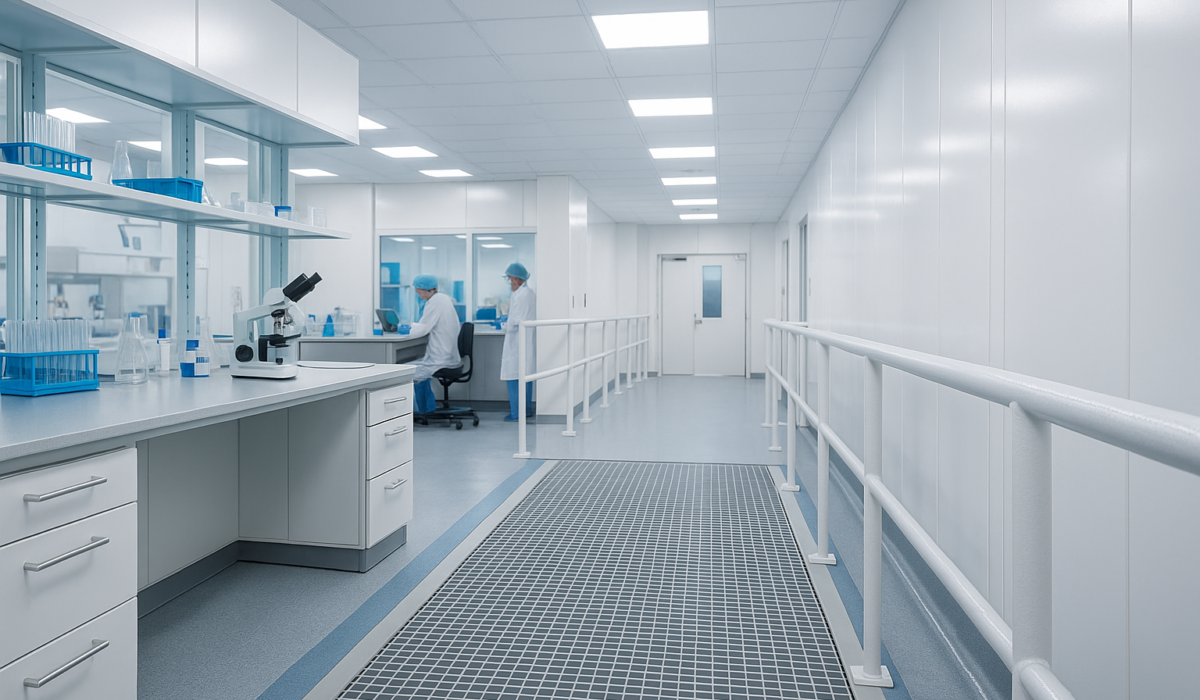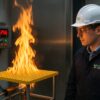GRP in Biomedical Engineering: Building Safer, Cleaner, and Compliant Facilities
Biomedical engineering and manufacturing environments are under more pressure than ever to deliver hygiene, compliance, and long-term performance. From cleanrooms and production lines to research labs and rooftop plant zones, every element of a facility must support safe, sterile and sustainable operation.
Steel, timber and concrete often fail to meet the demands of modern life science construction. That’s why Glass Reinforced Plastic (GRP) is now widely used in new builds and refurbishment projects across the sector.
Engineered Composites supplies fully compliant GRP systems that offer unrivalled chemical resistance, cleanliness, and structural integrity — all while reducing maintenance and installation time.
Why GRP Outperforms Traditional Materials in Biomedical Settings
In environments governed by ISO 14644 and GMP protocols, any risk of contamination or corrosion is unacceptable. GRP offers a non-porous, inert surface that resists bacterial growth and can withstand repeated cleaning with harsh chemicals.
It will not rust, rot, spark or degrade. This makes it ideal for biomedical flooring, bunded areas, gantries, and access routes. Products like GRP open mesh grating provide drainage and slip resistance while preventing static discharge.
In rooftop or internal platforms, GRP pultruded profiles and GRP box sections deliver strength without adding unnecessary weight. They’re electrically non-conductive, chemically resistant and can be supplied to precise dimensions for fast installation.

GRP handrails provide safety in bunded zones and mezzanines, while anti-slip stair nosings improve compliance across access routes and emergency egress points.
Technical Performance and Compliance
All Engineered Composites products are manufactured to BS EN 13706 and are available with
Class 2 fire ratings (BS 476 Pt 7 and ASTM E84). This ensures they meet safety requirements
in enclosed, high-risk or sterile environments.
Mechanical properties include:
● Tensile strength: up to 240 MPa
● Operating temperature: –40°C to +120°C
● Chemical resistance: resistant to disinfectants, solvents, acids and alkalis
● Electrical safety: non-conductive and non-magnetic
● Fire safety: Class 2 fire retardancy available across product range
Many products are supported with Environmental Product Declarations (EPDs) for BREEAM,
LEED and other sustainability certifications.
Applications Across Biomedical Engineering
GRP is highly versatile. It can be used throughout biomedical facilities to reduce downtime,
support hygiene goals, and future-proof the site.
Applications include:
● Cleanroom and corridor flooring
● Chemical storage and bund covers
● Equipment platforms and gantries
● Modular handrails and guardrails
● Roof access frames and duct supports
● Walkways around HVAC or plant services
● Internal stair tread upgrades
Fast install times and modular designs make GRP ideal for refurbishment and expansion
projects where hygiene and continuity of operations must be maintained.

Case Example: Cleanroom Access Upgrade
A UK-based pharmaceutical facility upgraded its internal platforms and service routes using GRP systems from Engineered Composites. The scope included GRP grating, modular handrails, and stair tread covers.
The installation was completed in days with no disruption to production. On completion, the site passed its post-install audit with zero corrective actions and now benefits from reduced maintenance requirements and improved audit readiness.
Conclusion
GRP offers far more than corrosion resistance. For biomedical environments, it supports hygiene protocols, improves installation timelines, and enables compliance with ISO, MHRA, COSHH and FDA frameworks.
Engineered Composites brings over 39 years of GRP expertise, supplying systems that meet the highest performance and regulatory standards. Whether you’re refurbishing an existing facility or planning new construction, our team is ready to help.
Speak to our GRP specialists today to discuss your next biomedical project and discover how we can support safer, smarter infrastructure from day one.




